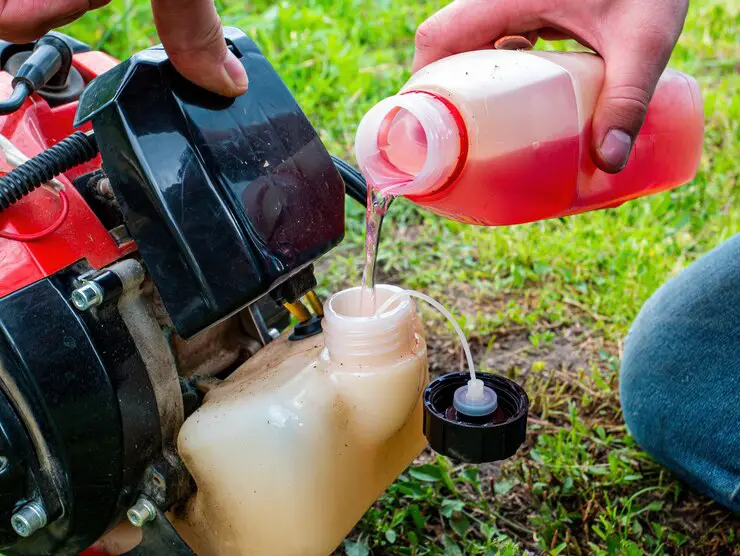
Lawn care is one of those tasks that can give you a sense of satisfaction and peace of mind, but there’s a part of the process that’s often overlooked — safely refueling your lawn mower. If you’ve ever had the pleasure (or frustration) of mowing your lawn, you know that running out of fuel halfway through can be a real buzzkill. But more importantly, if not done properly, refueling can lead to dangerous accidents, ranging from fires to personal injuries. This comprehensive guide will walk you through how to safely refuel your lawn mower, providing helpful tips, expert insights, and plenty of real-world advice.
The Importance of Safe Refueling
Before diving into the practical steps, let’s take a moment to understand why refueling your lawn mower safely is crucial.
Fire Hazards and Spills
Fuel is flammable, and even small spills or fumes can ignite, especially in the presence of a hot engine or spark. A fire can spread quickly, leading to property damage or even injuries. This is why knowing how to handle fuel properly is non-negotiable.
Personal Injury Risks
In addition to fire hazards, improper refueling can also lead to personal injuries, like burns or cuts. Handling fuel inappropriately can cause fuel to spill on your skin, leading to irritation or worse, depending on the chemical composition of the fuel.
Environmental Impact
Spilling gasoline or oil isn’t just hazardous to your health or your property; it also has detrimental effects on the environment. Gasoline can seep into the ground and contaminate local ecosystems, harming plant life, wildlife, and waterways.
Step-by-Step Guide: How to Safely Refuel Your Lawn Mower
1. Choose the Right Location
Refueling your lawn mower should always be done in a well-ventilated, open space, away from heat sources or open flames. A few suggestions:
- Outdoor Location: Preferably in a wide-open area with no structures or vehicles nearby.
- Avoid Hot Engine: Wait for the engine to cool down before refueling.
- Distance from Flames: Keep the mower at least 10 feet away from any flame source, including grills or burning cigarettes.
2. Turn Off the Mower
Sounds simple, but this is a step that too many people overlook. Never refuel your mower while it’s running. The engine could create a spark that might ignite the fuel, especially when you’re handling gasoline. Always make sure to:
- Turn off the mower’s engine: Ensure it is completely powered off before beginning the refueling process.
- Allow for Cooling: Let the engine cool for a few minutes if you’ve just finished mowing.
3. Use the Correct Fuel
Not all lawn mowers require the same type of fuel. Using the wrong fuel could cause engine problems or even damage. Here’s what you need to know:
| Fuel Type | Recommended For | Best For |
|---|---|---|
| Gasoline | Most modern lawn mowers | Gas-powered mowers and trimmers |
| Mixed Fuel | Two-stroke engine mowers | Engine performance boost and fuel efficiency |
| Ethanol-Free Gasoline | Older or high-performance mowers | Prevents damage to fuel system, engine wear |
Tip: Always check your mower’s manual to ensure you’re using the right fuel mixture.
4. Use Proper Containers
Never use just any container to store or pour fuel. Gasoline containers must be specifically designed for safe fuel storage. Here are some guidelines:
- Certified Fuel Containers: Always use a container labeled for gasoline use, ideally with a built-in nozzle to prevent spills.
- Secure the Lid: Ensure the container’s lid is tightly secured to avoid fumes from escaping or spills while transporting.
- Avoid Overfilling: Leave some space in the container to prevent spillage.
5. Refuel Slowly and Carefully
When it’s time to pour, take your time and stay focused. Don’t rush this step. Here’s how to do it right:
- Nozzle Position: Hold the fuel nozzle close to the mower’s fuel tank opening to avoid spills.
- Pour Slowly: Gently pour the fuel to avoid splashing. This helps prevent fuel from spilling or overflowing.
- Clean up Spills Immediately: If you spill any fuel, clean it up immediately using rags or paper towels, and make sure the area is dry before you start the mower again.
6. Store Fuel Safely
After refueling your mower, make sure to store the leftover fuel in a safe, designated place. Here’s how:
- Cool and Dry Storage Area: Keep your fuel in a cool, dry area away from sunlight and any flammable materials.
- Properly Seal Containers: Always securely seal the fuel containers to avoid leaks or evaporation.
- Check Expiry Dates: Fuel can degrade over time. Keep track of how long it’s been stored and dispose of old fuel properly.
Expert Insight: Gasoline has a shelf life of around 30 days before it starts to degrade. To avoid using old fuel, add a fuel stabilizer if you plan to store it for extended periods.
7. Check for Leaks and Malfunctions
Before you start the mower after refueling, do a quick inspection to make sure there are no leaks or malfunctions in the fuel system. This will reduce the chances of accidents and improve the longevity of your mower.
- Inspect Fuel Lines: Look for any cracks or leaks in the fuel lines.
- Check Tank Cap: Ensure the fuel tank cap is tightly secured to prevent leakage.
Common Mistakes to Avoid When Refueling Your Lawn Mower
While the steps above will help keep you safe, here are some common mistakes people make when refueling their lawn mowers:
- Refueling While the Mower is Running: This is a major fire hazard. Always turn off the engine first.
- Spilling Fuel: Not paying attention to the nozzle or the tank can lead to fuel spills, which can be dangerous.
- Using the Wrong Fuel: Always double-check your mower’s fuel requirements before refueling.
- Refueling Near Heat Sources: Gasoline is highly flammable. Never refuel near any flame or heat source.
- Not Storing Fuel Properly: Fuel should be stored safely, away from heat and sunlight.
FAQ: Everything You Need to Know About Safely Refueling Your Lawn Mower
1. How often should I refuel my lawn mower?
The frequency depends on the size of your lawn and the fuel capacity of your mower. On average, refueling every 30-45 minutes of mowing is typical. Always check the fuel gauge or open the tank to ensure you have enough before starting.
2. Can I use old fuel to refuel my mower?
It’s not advisable to use old gasoline because it loses its effectiveness over time. If your fuel is more than a month old, consider adding a fuel stabilizer or disposing of it and using fresh fuel.
3. What should I do if I accidentally spill gasoline on my mower?
Wipe off the spill immediately with a cloth or paper towel. Avoid starting the mower until the spill is cleaned up, and always let the area air out to prevent fumes from building up.
4. Is it safe to refuel my mower in my garage?
Refueling inside an enclosed space like a garage is not recommended, as gasoline fumes are highly flammable. Always refuel your mower outdoors in a well-ventilated area.
Conclusion: Refuel Responsibly, Mow Safely
Refueling your lawn mower may seem like a simple task, but as we’ve learned, there’s more to it than just filling up the tank. By taking the necessary precautions, you can reduce the risk of accidents and ensure your mower stays in top condition. From choosing the right fuel to storing it properly, following these steps can help you avoid costly mistakes and keep your lawn care routine running smoothly.
Next time you’re out mowing, remember: a few extra minutes of care while refueling can prevent disasters and keep you safe. Happy mowing!
For more safety tips and lawn care advice, check out this resource on lawn mower safety.



